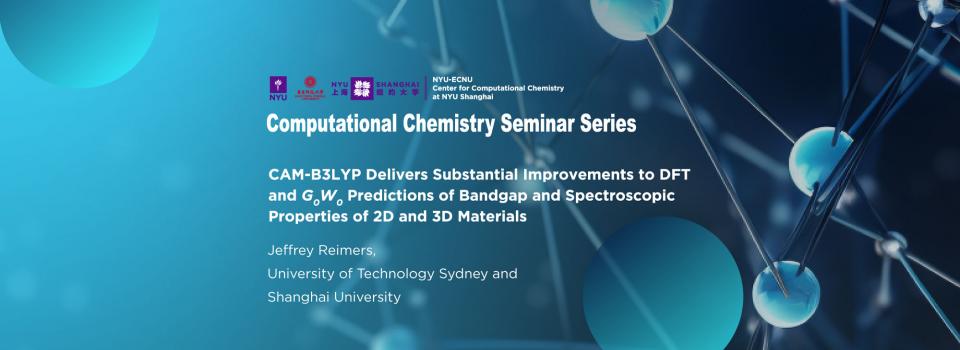
Abstract
Density-functional theory (DFT) has been the centerpiece for calculations of properties of molecules, 2D, and 3D materials, with the much more computationally expensive, but more accurate, ab initio G0W0 approach becoming popular. However, G0W0 must be started from DFT orbitals, and so the problem of optimizing both approaches is coupled. Many types and variations of density functional have historically been used in both applications. We focus on range-corrected hybrid functionals as only this class can adequately describe charge separation within molecules and materials. In particular, we consider the CAM-B3LYP functional, known for its optimal performance in spectroscopic DFT and G0W0 calculations of molecules, as it has just become available for applications to 2D and 3D materials in VASP and other software.
Results show 2-5-fold improvement in mean-average (MAD) and worst-case deviations from experiment for bandgap and transition-energy calculations of iconic 3D materials compared to traditional functionals such as PBE, SCAN, HSE06, and PBE0. For example, MAD errors are reported at 0.33 eV (CAM-B3LYP), 0.60 eV (PBE0), 0.86 eV (HSE06), 1.30 eV (SCAN) and 2.01 eV (PBE), with worst-case errors typically being 3 times larger (e.g., 1.1 eV for CAM-B3LYP). For the calculation of exciton-binding energies, CAM-B3LYP always delivers results useful in experimental data assignment, whereas the other methods always underestimate them by factors of 5 or more.
For 343 2D materials, use of CAM-B3LYP is shown to deliver results with MAD and maximum deviations from G0W0 of 0.23 eV and 0.53 eV, respectively, with PBE, HSE06, and PBE0 delivering analogous deviations that are 4-6 times larger. Also, band-gap corrections introduced by G0W0 calculations are 3-10 times larger for PBE, HSE06, and PBE0, and as well quasiparticle weights Z are significantly smaller. These results indicate a much closer similarity between CAM-B3LYP DFT results and G0W0 ones.
Even though PBE0 properties differ significantly from those of CAM-B3LYP and G0W0, the G0W0 results obtained starting from them are in good agreement with those from CAM-B3LYP. However, G0W0 results starting from PBE or HSE06 wavefunctions are poor, showing MAD and maximum deviations of 0.39 eV and 1.11 eV for HSE06 and 1.11 and 3.15 eV for PBE, respectively. These results indicate that PBE is unacceptable as a starting functional for G0W0 calculations, as has been a common practice.
Biography
Jeffrey Reimers studied organic spectroscopy under Ian Ross and Gad Fischer before doing a PhD with Bob Watts on the structure, thermodynamics, and spectroscopy of water and ice. He then studied semiclassical quantum mechanics in USA under Kent Wilson and Rick Heller, before returning to Australia to be an ARC Research Fellow from 1985 to 2010 at the University of Sydney and there as a professor until 2013. There he collaborated extensively with Noel Hush and Max Crossley on problems involving electron transfer, molecular electronics, porphyrin chemistry, self-assembly, electronic-structure theory, and photosynthesis. In 2014 he moved to a joint appointment at University of Technology Sydney and Shanghai University, focusing mostly on basic chemistry and spectroscopy, nanophotonics, molecular electronics and electronic-structure computational methods. His work spans a wide range of chemical applications, from biochemical function to electronic devices to the origins of consciousness. He has received the RACI Physical Chemistry Division Medal and the H.G. Smith Medal, the David Craig Medal of the Australian Academy of Science, and the Shanghai Magnolia Medal; he is a Fellow of the RACI, the Royal Society of NSW, and the Australian Academy of Science.
Seminar Series by the NYU-ECNU Center for Computational Chemistry at NYU Shanghai
This event is open to the NYU Shanghai, NYU, ECNU community and the computational chemistry community.


